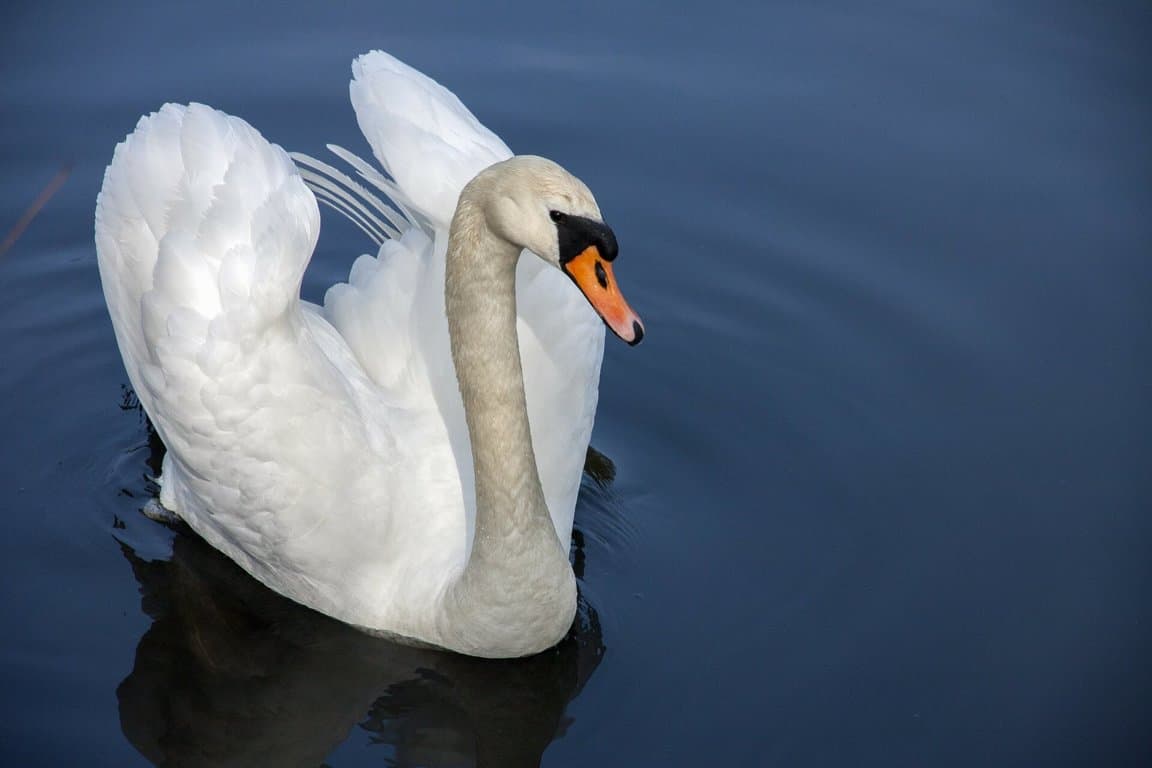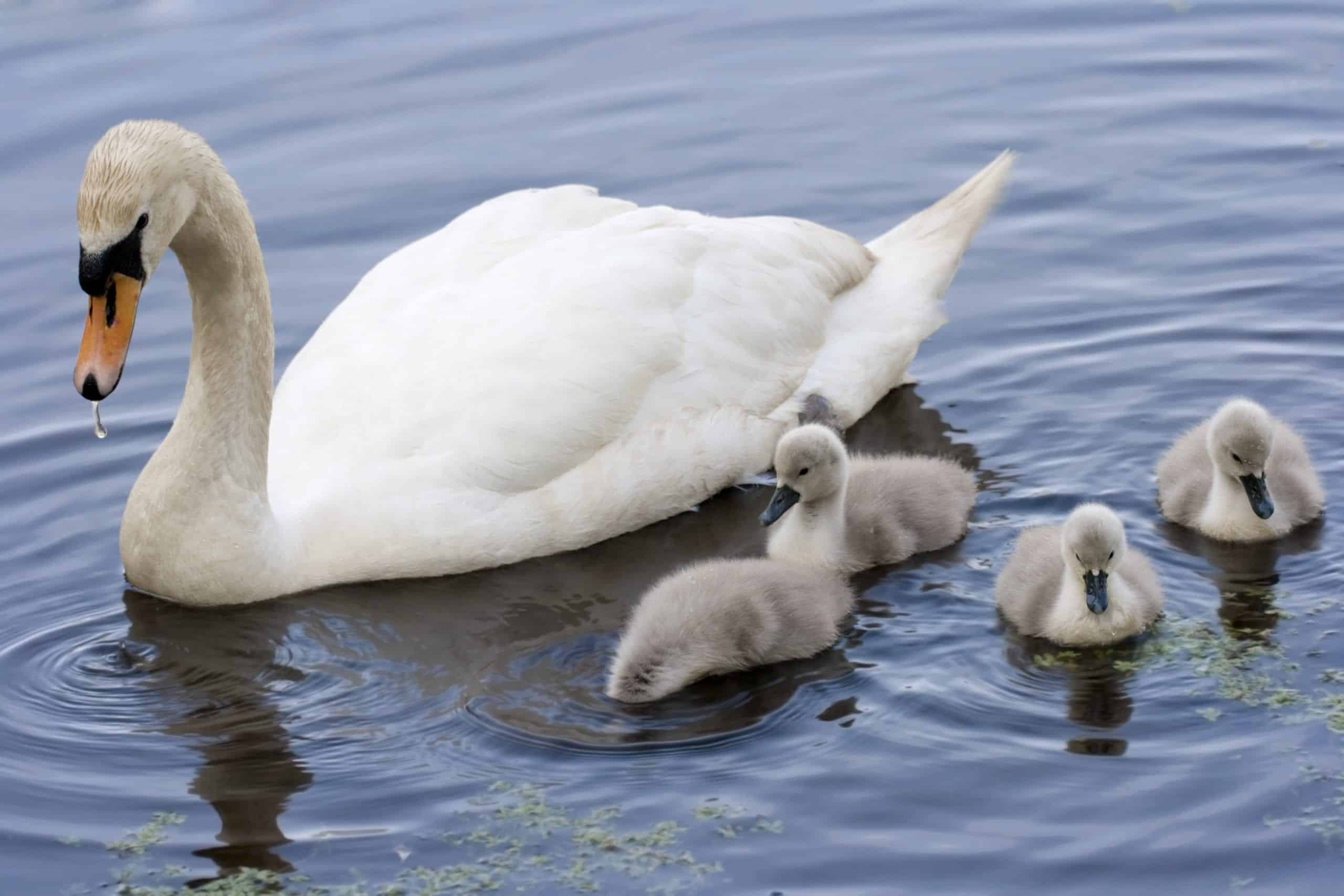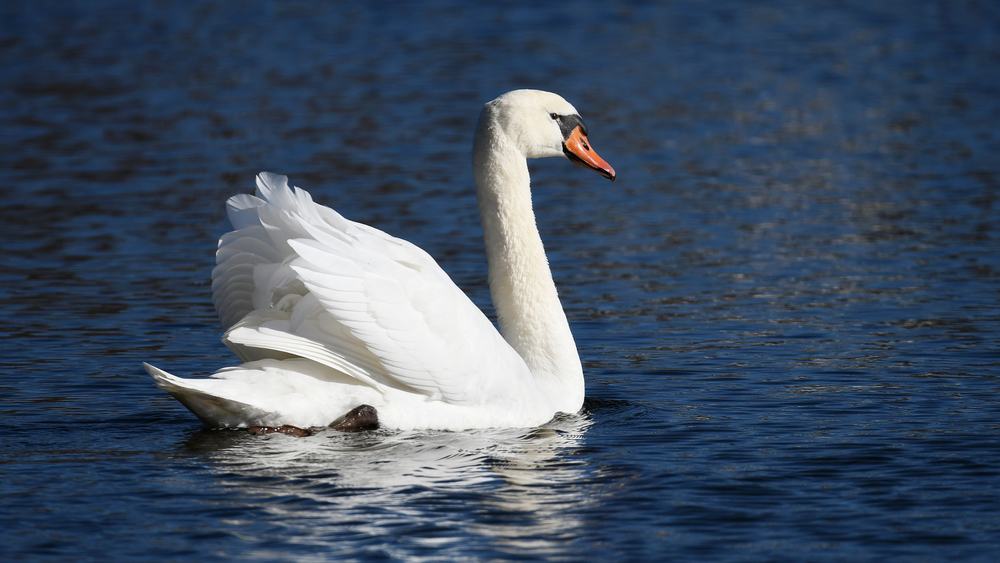Swans are perhaps the most admired and one of the most beautiful species of birds. Many people enjoy watching them as they gracefully and effortlessly glide across the water. Lots of people also enjoy feeding them, but what do swans eat?
If you like to feed swans, then it is important to know what to feed them. In this article, you will find information about what swans eat. We have also included information about their habitats, and tips on how to feed swans.
Facts about Swans
Swans, together with ducks and geese, belong to the waterfowl family and they are the largest birds in that group. The scientific name for swan is Cygnus and there are six species of swans which are, the mute -, the whooper -, the trumpeter -, the tundra -, the black -, and the black-necked swan.
Most of the swan species are migratory birds, which means they spend their summers and winters in different places. Many people in the northern hemisphere love these migratory birds, because their return means that summer is just around the corner.
Appearance

The characteristics of swans include a large body and they have long, curved necks and big feet, which make them powerful swimmers. The trumpeter swan is the longest type of swan and measures nearly 5.5 feet and its wingspan can be ten feet. Mute swans are the heaviest species and can weigh up to 50 pounds.
The six species all have different color plumage. The mute swan has white feathers, an orange bill and some black markings on the face. Both tundra and whooper swans have white plumage and a mixture of black and yellow on the bill. The trumpeter swan also has white feathers, but it has a black bill.
Black swans have entirely black plumage, and their bill is bright red with a pale tip. The black-necked swan, as the name suggests, has black feathers. It has a black bill with a red knob around the bill and white markings around the eyes.
Habitat
Because swans are waterfowl, they choose areas with water for their habitat. They are found in a variety of environments that have water, including wetlands, lakes, estuaries and ponds. When nesting, swans choose reed beds and areas of dense vegetation close to the water’s edge.
Swans are found on most continents. They live across Europe, Asia, Australia and North, Central and South America. However, due to their migratory patterns, many swans spend parts of the year in different locations.
Migration
Swans migrate after the breeding season and fly thousands of miles to spend winters in southern locations. They fly in a diagonal V formation that can include as many as one hundred swans.
The tundra swan’s habitat is the Arctic regions of North America and Asia during the summer months. For the winter, it migrates to Texas and northern Mexico. The whooper swan is another fully migratory swan. They breed at northern latitudes during the summer and move to more southern latitudes for the winter.
Trumpeter and black-necked swans are migratory over most of their ranges and the black swans are nomadic. This means that instead of always migrating at the same time of the year, they have erratic patterns dependent on the weather.
Swan behavior
Swans are among the bird species that mate for life. This allows the males (called cob) and females (called pen) to form a strong bond with their mate. It also helps them to learn from their failures to reproduce and develop new strategies. They also share duties such as building the nest.
Interestingly, swans have been known to break up with each other and find a new mate if they repeatedly fail to produce any cygnets.
Swans are defensive animals and will go to great lengths to protect the cygnets. To drive off threats. They will flap their outstretched wings and make hissing and snorting sounds. You can find more information about swans’ behavior and reproduction on A-Z Animals.
What do swans eat?
Swans are almost entirely herbivorous and mainly eat the leaves and stems of vegetation underwater. They also eat algae, roots and tubers that they get by digging into the substrate.
You might have sometimes spotted swans in the water with their bottoms up. This is a method called dabbling they use to feed when swimming in the water. It involves flipping upside down and using their long necks to reach the vegetation at the bottom. Here is a video of a mute swan dabbling in Studley Royal Deer Park near Ripon, England.
Swans can also come up onto the land to find food. They will search for roots, stems, leaves, shoots and other plant matter. Swans will occasionally eat fish and fish eggs as well as the mollusks that are stuck to the plant leaves they eat.
Winter Diet
Although swans mainly stick to the same diet all year round, some species will supplement their plant diet with agricultural crop remnants, including grains and potatoes.
Especially, swans that do not migrate might find that they are using more energy than usual as the weather turns colder. Colder weather also means their natural food is more scarce than during the summer.
Swans will also eat more earthly plants and berries in the winter. These will include blueberries, cranberries, wheatgrass and ryegrass. To find out more about species specific diets, click here.
What do baby swans eat?
The young of most species of birds rely on their parents to bring them food to the nest until they are old enough to spread their wings. Swans are different. Baby swans only need a day or two before they can join their parents in the water and find food.
The parent swans will usually take the cygnets into shallow water and paddle their feet to stir the water, which brings nutritious food closer to the cygnets. During the first seven days, cygnets are not able to dabble, so they mainly eat food that is on or just below the surface, including small insects, mollusks, frogs’ eggs, freshwater shrimp and tiny fish.
After a few weeks, when they can dive for longer periods, the cygnets will shift to eating more plant matter. They gradually stop eating insects and crustaceans and focus on eating grass, fruit, and water plants.
How do swans eat?

Swans don’t have any teeth for grinding food. Instead, they use a structure called a gizzard. It helps digestion because it increases the surface area of the food they swallow.
Swans need to eat about 25% of their body weight per day because they only extract a small number of nutrients from the food they eat. So a swan weighing 20 kg needs to eat about 5 kg of plant matter every day.
Tips on feeding swans
Many of us enjoy feeding swans, but it is important to know what to feed them and what you should never give them because they could be fatal. You should stick to the foods swans eat naturally. These foods include grains, corn, carrots and spinach.
If you are feeding them during the winter months, leafy greens such as lettuce and spinach are a great option. They will help supplement the swans’ energy intake. When feeding them leafy greens, tear them into small pieces first. It is also possible to buy food pellets for swans that float on water.
What you should never give swans
You should avoid giving swans processed human foods because these can cause nutritional imbalance and lead to dangerous digestive blockages. Foods you should never give swans include cakes, cookies and other sugary foods, crisps, chocolate, raw meat, and chips. Other foods that can be fatal for swans include onions, mushrooms, and apples.
When feeding swans, only give them small amounts of the permitted foods and stop feeding when they lose interest.
Can you feed swans bread?
There is no evidence that bread harms swans, as long as it isn’t moldy and it can supplement their diet, especially in the winter when vegetation is scarce.
However, some people say that you should not give swans (or any other birds) bread because it doesn’t have much nutritional value. Instead, the birds will fill up with bread and then not eat other foods that would give them the nutrients they need.
To find out more about feeding swans, including full lists of what to feed and not to feed them, visit Bird Facts.
What predators eat swans?
Most predators will not eat a fully grown swan because they are very aggressive when threatened. Their speed and flying ability also make adult swans difficult prey to catch.
However, old and ill swans and the young can fall prey to foxes, raccoons, wolves, and other carnivorous animals. Crows, herons, magpies, pike, and large perch can also eat newborn cygnets. Many of these predators are also known to eat unprotected swan eggs.
Conclusion
Now that you know what swans eat, you can feed them safely, knowing that the foods you give them are beneficial and not harmful to them. Winter is the better time to feed swans because, during the summer, they can find plenty of food.
We hope o have covered all the questions you might have had about what swans eat and what you can feed them. However, should you have further questions about feeding swans and their diet, write your questions in the comments section.
